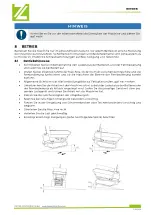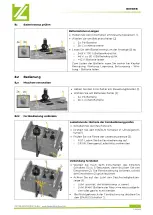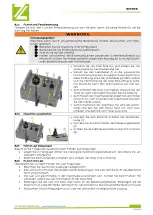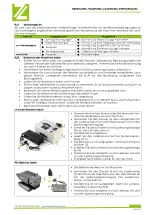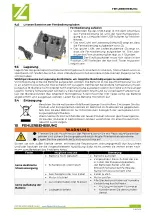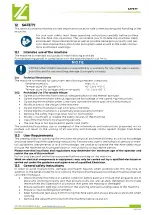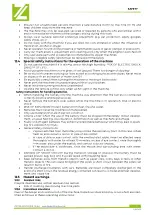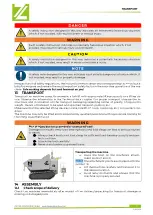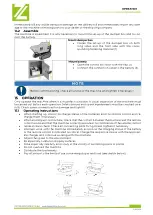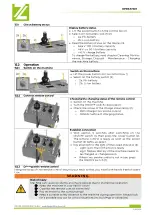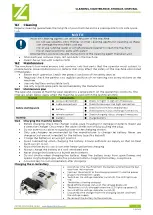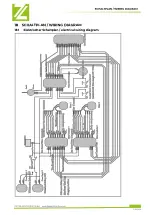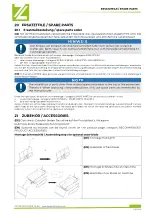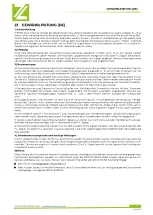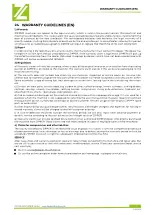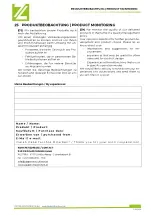
CLEANING, MAINTENANCE, STORAGE, DISPOSAL
26
ZI-ED400
16.1
Cleaning
Regular cleaning guarantees the long life of your machine and is a prerequisite for its safe opera-
tion.
N OTE
Incorrect cleaning agents can attack the paint of the machine.
-
Do not use solvents, nitro thinner or other cleaning agents for cleaning, as these
can damage the machine's coating.
-
Never use running water or a high-pressure cleaner to clean the machine.
-
Never clean electronic parts with water!
Observe the specifications and instructions of the cleaning agent manufacturer.
•
After each use, remove chips, dirt and debris the machine.
•
Clean the surface with a damp cloth.
16.2
Maintenance
The machine is low-maintenance and contains only few parts that the operator must subject to
maintenance. Have malfunctions or defects that may affect the safety of the machine eliminated
immediately.
•
Before each operation, check the perfect condition of the safety devices.
•
Regularly check the perfect and legible condition of the warning and safety stickers on the
machine.
•
Use only faultless and suitable tools.
•
Use only original spare parts recommended by the manufacturer.
16.2.1
Maintenance plan
The type and degree of machine wear depend to a large extent on the operating conditions. The
intervals given below apply when the machine is used within the technical limits:
Interval
Components
Measure
before starting work
•
screws connection
•
Check for tight fit, tighten if necessary.
•
cable connections
•
Check for damage and tight connection.
•
battery
•
Check for cleanliness and dryness.
•
Check battery status, recharge if necessary.
•
remote control
•
Check charging status, charge if necessary.
monthly
•
battery
•
charge battery
16.2.2
Charging the machine battery
•
Before charging, check the charger (cable, plug, housing) for damage or defects. Never use
a defective charger. Disconnect the cable connection only by pulling the plug.
•
Do not extension cables to supply power to the charging station.
•
Only use chargers recommended by the manufacturer to charge the battery. Never use
chargers that are not intended for the battery type (fire hazard!).
•
Charge the battery in an upright position.
•
Avoid overheating when charging the battery. Ensure sufficient air supply so that no heat
build-up can occur.
•
Allow the battery to cool down after heavy use before charging.
•
Always charge the battery in a well-ventilated area.
•
Never charge the battery in a humid environment.
•
Do not smoke when charging the battery. Keep the battery away from open flames and
sparks. Oxyhydrogen gas, which is produced when charging the battery, is explosive.
•
Allow battery to cool immediately after charging.
Charging the Li-ion battery
•
Disconnect the machine from the battery and remove the bat-
tery from the machine.
•
Connect the plug (5) to the charging socket (1) and the power
plug (4) to the power supply.
•
Switch on the voltage indicator switch (3). The LED lights up
red.
•
The battery is being charged.
•
Read off the charge status on the voltage display (2).
•
The battery is fully charged when the LED lights up green (3).
•
Switch off the voltage indicator switch (3).
•
Disconnect the charger from the charging socket and from
the voltage supply.
•
Reconnect the battery to the machine.


